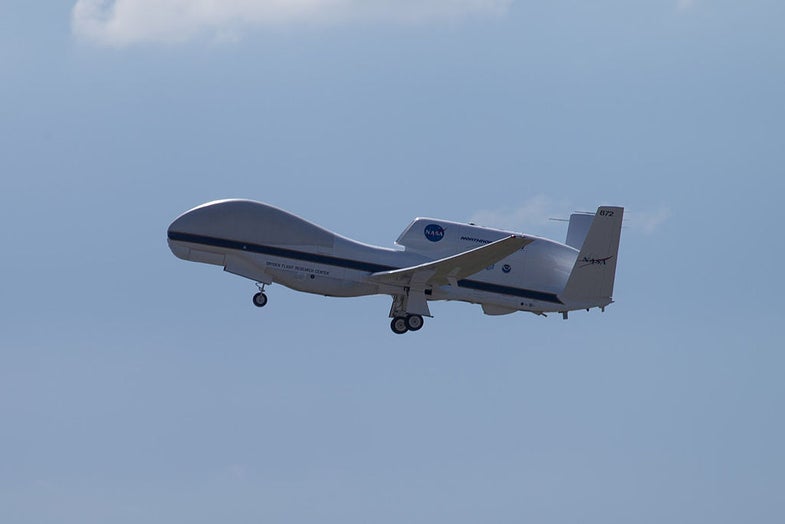NASA Sent A Drone Out To Track Hurricane Matthew
Going where no satellite can see

The RQ-4 Global Hawk is built for watching disasters unfold. The high-altitude, long endurance drone can fly for over 34 hours and reach an altitude of 60,000 feet above ground. Most of these expensive, private-jet-sized drones fly for the Air Force, where they watch battlefields in places like Afghanistan and Iraq, finding targets and coordinating troops below. NASA also flies one, for scientific research, and last night they used it to drop sensors into Hurricane Matthew.
The Global Hawk carries instruments from NOAA’s “Sensing Hazards with Operational Unmanned Technology” (SHOUT) project. The dropped expendable sensors (dropsondes) record temperature, pressure, relative humidity, and wind speed and direction, and then transmits that information to scientists. There’s a special radar examines storm “formation, structure and intensification,” and possibly other sensor packages, too.
Says NASA:
This is the second of three years of NASA flying the Global Hawk to watch storms with SHOUT sensors, and if successful, Global Hawks may provide hurricane information when satellites can’t, using their place high in the sky to help people on the ground below survive.
